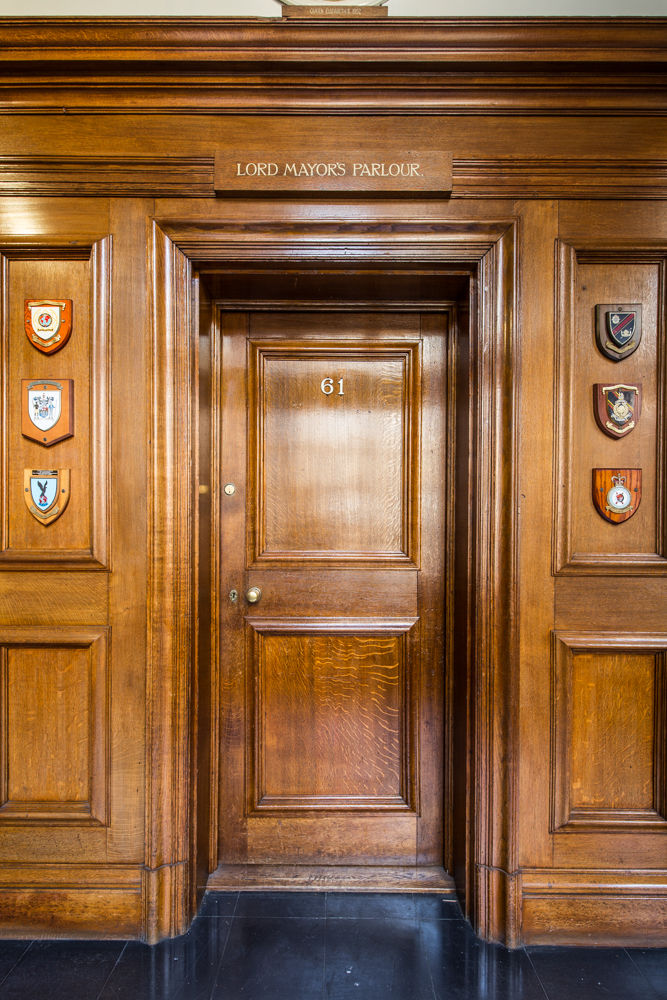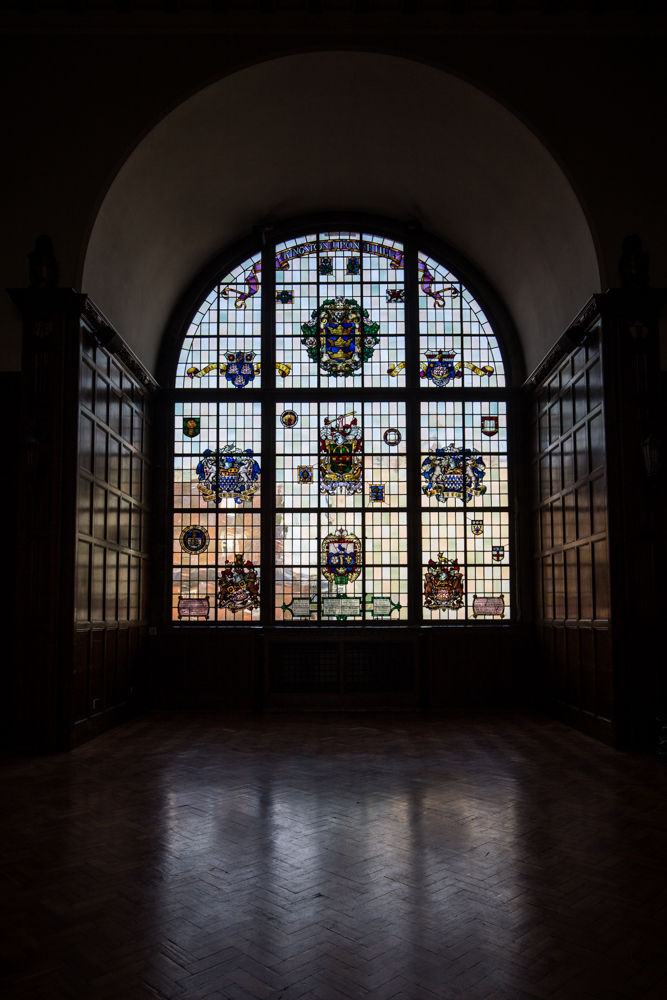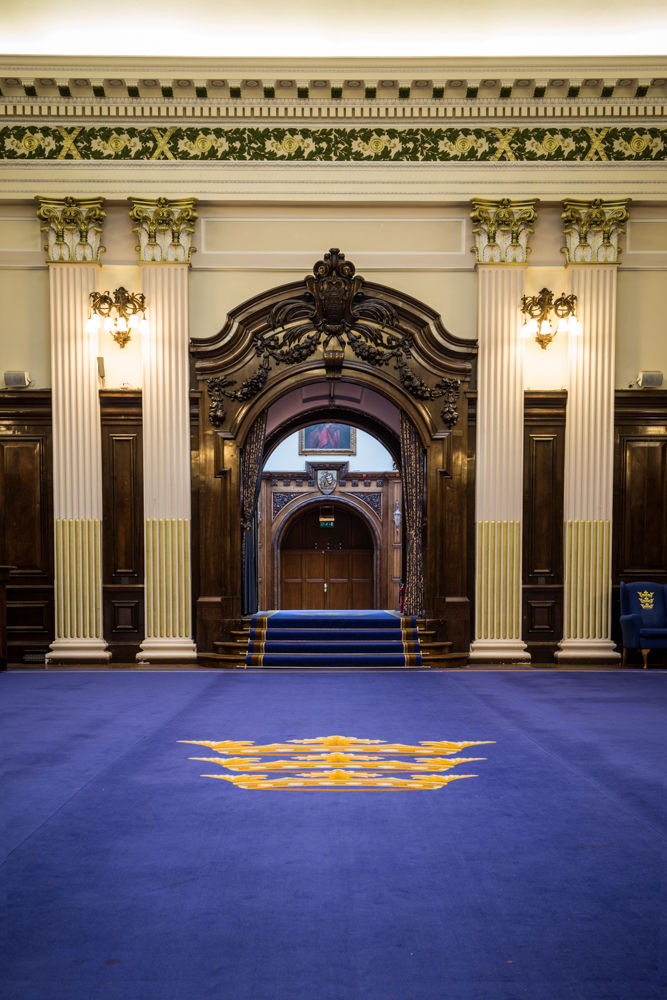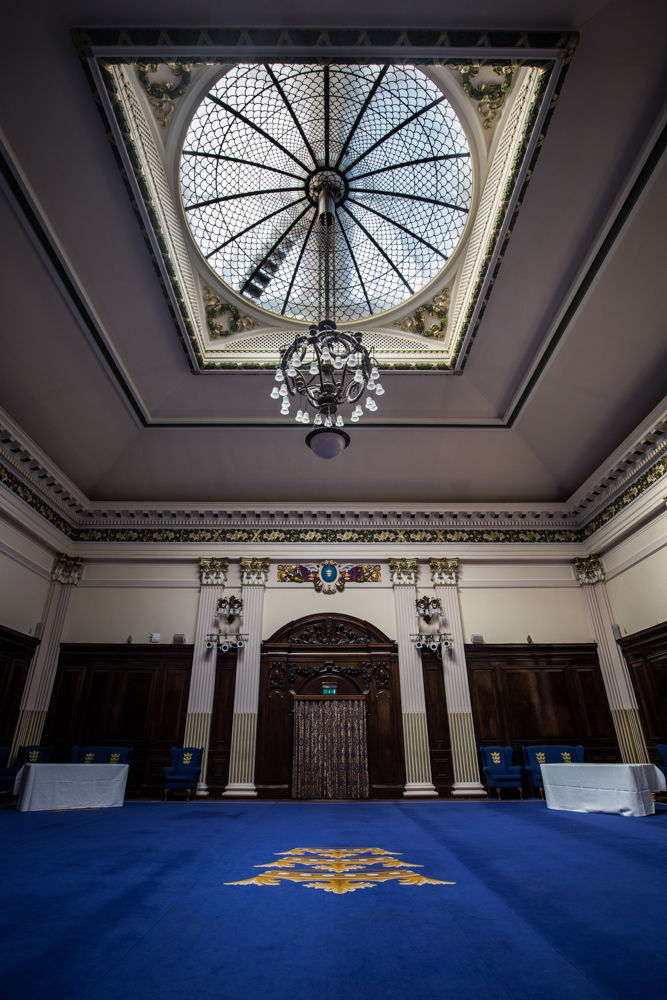The Guildhall Hull - Photographing one of Hull's best kept secrets
- Neil Nicklin Photography
- Feb 20, 2017
- 7 min read

Being a photographer in Hull for a number of years I'd like to think I have covered most buildings and areas but sometimes an opportunity comes along and you just have to grab it with both hands.
I've taken pictures of the exterior of The Guildhall on a few occasions previously but never had I been on the inside. I have seen the odd wedding photograph and often admired the interior but it was always one of those places I just assumed was off limits so when I was approached with an opportunity to shoot the inside I grabbed it with both hands.
I was met by the former Hull Lord Mayor John Stanley and his wife and former Hull councillor Ann Stanley who were to give me my guided tour and point out some of the more peculiar characteristics of the building as well as provide me with an excellent background and history of what I was photographing.

As I walked from the reception area to make my way to the grand staircase it's clear this is an impressive building that whilst still serving purpose as a busy civic building and headquarters to Hull City Council it is also very elegant and prestigious and it's clear why many would choose to be wed here.

The impressive staircase has some wonderful décor and with it's Sicilian marble pillars it feels fit for royalty and in fact at the foot of the sweeping staircase sits a statue of King Edward I who granted the City's first charter in 1299. A Royal luncheon was held here when Queen Elizabeth II visited Hull for the first time in a decade in 2009 and also played host to Princess Diana as well as high profile visitors such as Sir Winston Churchill and Archbishop Desmond Tutu.
The architecture has a real classic feel with an air of renaissance added for that extra wow factor that makes this building one that Hull should be proud of. Designed by North Yorkshire (Scarborough) architect Sir Edwin Cooper it was finished in 1907 with the east end of the building replacing the old town hall in 1913 and took another 3 years to finish.
The Guildhall was granted grade II listed status in 1973 and many elements have been restored or had preservation work undertaken not to mention that some parts of the building were heavily damaged during the second world war.

I reach the first floor landing and one is met by the most impressive silver display cabinets showing some of the council's silver and insignia. There is a covered leather chair that was made especially for the doorkeeper to the old Town Hall when ancient documents and bailiff dues and market taxes were held in a large oak and iron chest.


SM
A large painted mural sits above the Robing Room depicting the moment King Edward III presented the charter creating the office of Mayor to Sir William De La Pole. A list of lord Mayors from 1913 to the present day can also be read either side of the hardwood entrance.

As we venture from the landing and in to a long polished walnut lined corridor that houses some of the most impressive rooms I stop to take in some of the old photographs that line the walls as well as some of the ships crests from vessels that visited the port over the years.

The timber panelling has lots of character and for over 100 years old is in remarkably good condition. Again it has a very classical feel and I could almost imagine Queen Elizabeth II with the Duke of Edinburgh walking the corridor to the Lord Mayor's Parlour. The original ironmongery adds to the feel and as regulations progressed over more recent years, fire closers and the like have been added in a tasteful way.
I manage to open a window in the corridor and I look down in to a small quadrangle, possibly used to muster for civic events over the years but it was the old window frames that left a lasting impression. I pointed them out to Ann and it's almost certain that most of the glass was replaced from the blasts during the war but the Yorkshire Bar iron frameworks were still in tact.
The corridor is long and my hosts explained that when the original town hall was demolished and the East side built, the corridor was joined and it actually has a small bend in it at the middle.

Speaking of character in the timber, as we arrived at the Lord Mayor's banqueting room I was told an intriguing story. The door sits directly opposite the old post office in Alfred Gelder Street and during the second world war a bomb hit the post office. The blast was that ferocious it blew the windows in the Guildhall frontage and shrapnel entered the dining room but the door was propped open and the shrapnel flew right through the open door, passed through the timber panelling in the corridor and embedded itself in to the walls beyond. The panelling has never been repaired as a reminder of that day and rumour has it the shrapnel is still embedded in the wall to this day.

The Lord Mayors dining room is impressive with a large table that is capable of seating around 30 guests that sits central to the regal carpet design. There are some 17th Century style carvings of fruit on the walnut panelling and attention to detail was clearly at the forefront of Sir Edwin Cooper's design. The City's 3 crowns crest can be seen on the doors to the tall wall cabinet.

The Lady Mayoress's Parlour has a more homely feel whilst still maintain standards of the highest level. The design is in keeping with the rest of the rooms but this does have that sense of a woman's touch. There's a slight pink theme going on with the cushions, lamp shade and the suite having varying shades and there's also a link with the Far East with the china cabinets housing two Spode tea services bought for the royal visit of King George VI in 1948.



The Lord Mayors Parlour again has the 17th century carvings of fruit and fish that remind us of Hull's heritage in fishing and whaling. The walnut wood panelling continues and the matching table and desks make this room feel very official and fit for a Lord Mayor to undertake civic duties. There sits a grandfather clock in the corner of the room, taken from the original Hull Town Hall and a carved statue of Charles II as well as an impressive fire place with more carvings within.



The Council Chamber in the Guildhall was possibly my favourite room. Photographically it has many elements that appeal and it's that impressive you simply cannot take it all in with one photograph. The business room I suppose where the important decisions are made is the Hub of civic life and has an interior to match it's importance. The doors are covered in heavy leather and open in to a grand space of tiered seats headed by the Lord Mayors raised seated platform. The bronze chandeliers hang from the mouths of fish and many maritime items such as anchors and shells can be found in the ever impressive carvings. The half moon window has the City's 3 crown insignia again and the coffered dome glass is arranged as fish scales. The ceilings are covered in the white rose of Yorkshire, supposedly one for each day of the year and small port hole style windows can be seen, another pointer to the city's seafaring history.


The banqueting hall is a beautiful large space and I had some rare February sunlight pouring through the stained glass windows. The windows were heavily damaged during the war and a picture from that day sits on the wall at the northern end. The windows weren't restored immediately after the war and it was in fact over 10 years later that they were put back but this time with some additional Coat of Arms added, namely the University of Hull but also some important Hull families Coat of Arms were added also.

There are a number of paintings in the hall and I picked out two here that caught my eye. The first one is of Paragon Station when the Queen visited in 1969 and show's the surrender of the sword of state to Her Majesty The Queen. Dressed in a very colourful yellow suit Her Majesty was accompanied by the Duke of Edinburgh and Princess Anne and the Royal train can be seen with a hidden visitor aboard but I won't spoil the fun of finding her if you ever visit.

The second painting is depicting a scene from Sir Winston's Churchill's reign as Prime Minister. He was in the City surveying the damage sustained during the blitz and was the surprise guest at a luncheon to mark the 50th centenary of the shrievalty held by the sheriff Mr R G Tarran. Many members present at the luncheon contributed to the fund for the commission of the artwork however those that never donated were only painted with the backs of their heads showing.


As my visit neared the end I had time to check out the ballroom, now decorated for civic receptions, official dinners and other private functions such as wedding ceremonies the sprung ballroom floor is not put to use these days and the carpet remains in place all of the time.


Before I left there was time to visit the Wilson Room and grab a picture of the Wilberforce statue on my way out. The Wilson Room is a shrine to the ship owning Wilson family with many portraits hanging on the walls of this room.
The Guildhall is a beautiful building, full of elegance, character and history. If ever you get a chance for a tour I would highly recommend spending a day here. If your guides are anywhere near as good as mine you will be forever intrigued.
With Thanks to John & Ann Stanley and also to The Guidhall for allowing these images to be shared.






































Comments